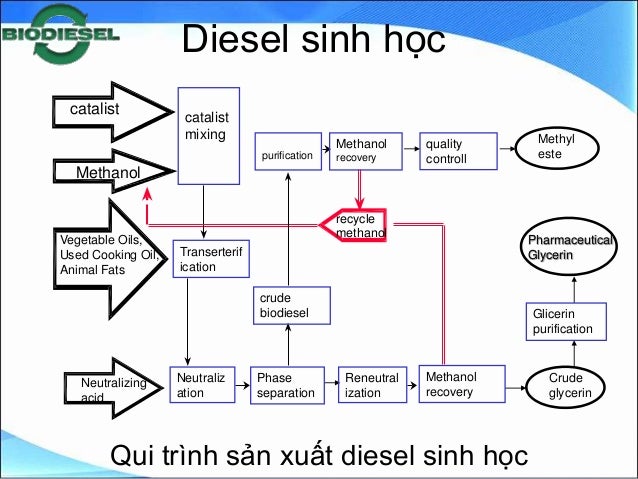
1. BIOFUELS GVHD ESSAYS
2. CONCLUSIONS and RECOMMENDATIONS GENERAL PROCESS MANUFACTURING
3. OVERVIEW
4.- Oil and gas constitute about 60%-80% of the world energy resources-exhausted within
40-50 years-increased air pollution. Complications of gas prices, crude oil. Political unrest among oil-exporting countries, ... Need to develop alternative energy sources such as wind energy, solar energy, nuclear energy, bio-energy and. ..
5. NLSH is the inevitable development trend, especially in the agricultural and water fuel imports with the advantages such as: environmental friendly. Technology is not too complicated. Use renewable raw material source.
6. NLSH fuel type is formed from compounds derived from plant and animal. NLSH is divided into three main groups: biodiesel biogas bio-Gasoline
7.-biological Gas is a liquid fuel, including using ethanol as a fuel additive to replace lead additives in gasoline. -Ethanol is made through the fermentation of organic products such as starch, cellulose, lignocellulosic. ...
8.-Straw is one of the remnants of plant abundance lignocellulosic world. Its annual output is about 731 million tons was distributed in Africa, Asia, Europe and the United States of America-In-straw has several characteristics that make it has the potential to become raw material for the production of fuel ethanol. It has high cellulose and hemicelluloses can be easily hydrolyzed to ferment sugar.
9. PROCESSES X COMMERCIAL ETHANOL FROM STRAW
10. Prepare pretreatment of fermentation Ethanol distillation hydrolysis of yeast breeding material General diagrams the ethanol manufacturing process of raw material from straw
11. Step 1: prepare the raw * materials washed purposes at the same time the hash, mashed raw materials to break down plant cell membrane structure, create conditions conducive to the process of hydrolysis takes place the better, increase process performance.
12. Step 2: pretreatment
13. Step 3: the process of fermentation of sugar at the same time it is the main stages of the process, the purpose of this phase is the road turns cellulose into glucose and glucose fermentation and enzyme thanks the other way (born from the process money handles by dilute acide) into ethanol thanks to microorganisms
14.-after hydrolysis, the raw materials are antiseptic to remove bacterial impurities and then diluted-SSF-process occurs in various barrels (usually 5) have wings to stir with the time saved a total of 36 h. The temperature of the barrel stabilizing chemical path using centrifugal pumps and heat-exchange equipment after the road turns, the residue of sugar contains about 12.6% sugar including glucose and xylose by 4% to 7% with other substances. SSF process takes place until focus eligible for the fermentation temperature 65° C solid Part in translating path 20% time saving on 1.5 flow cellulas 12 FPU/g cellulose technological conditions of SSF phase response Speed metabolism (Glucan) n → n Glucose Oligomer 0.04 (Glucan) n + H2O → n ½ ½ n Cellobiose 0.012 (Glucan) n + n H2O → n Glucose + Cellobiose 0.90 H2O → 2 1.0 The Glucose response occurs and the metabolism in the course of the road.
15. • yeast-like process-choosing men named Zymomonas mobils-mobils Zymomonas was developed in the production of the same enzymes. In it, the sugar residue, the nutrients along with men like to be added to the average young and this process continues until the same yeast needed for the fermentation process. Finally, like yeast nutrition and residue of sugar was to continuously into the fermentation tanks. -The mixture after yeast known as vinegar the nine Zymomonas mobils
16. Zymomonas mobilis fermentation temperature 41° C solid Portion of 20% time saving on the yeast content 1.5 10% of total room way fermented Corn Steep Liquor (CSL) 0.25% of Diammonium Phosphate (DAP) Level 0.33 g/L of vinegar the nine conditions of fermentation. -Fermentation process is done in 1 large bucket with estimated time to ferment sugar into ethanol for about 36 h. -Men from the barrel-like yeast production (about 10% of the total room sugar) is added to the barrel fermentation. In this process they also supplement 0, 33g DAP/liter of vinegar the nine to provide nourishment for yeast activity.
17. Step 4: distilled Vinegar the nine obtained following fermentation ethanol concentration is very low (about 5.7% ethanol). So we need to purify the product to raise the concentration of ethanol 99.5% up. The distillation Separation solid liquid separation water evaporate
18.CONCLUDED
19.-Although there are a couple of difficulties on the way of technological development but economically viable due to its complex nature and high ash content, lignin, some plans are going into developing effective preprocessing method to remove the unwanted parts to get the available line-approach in both technology and process technology still strains must be made to overcome the difficulties of the xylose and glucose fertilizer and improving the efficiency of the system. -With the advent of genetically modified yeast, enzymes cards p


0 Comment | Post comment